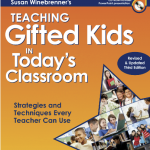I used to believe that creativity would lead to fun. I thought that if I crafted the right project and included a high level of creativity, students would enjoy every lesson. I was crushed, then, when I saw students getting bored, angry, anxious and confused.
At first, I thought that there was something wrong with the lessons. However, over time, I started to realize that any creative work has an ebb and flow of emotions. A chef faces tedium in prep work, anxiety in timing and moments of confusion when things don't seem to work right. When things fail, it can be lead to anger.
The same is true of a painter, who has to go through moments of complete tedium, patiently waiting for the right results. It's also true of a mechanic who tries tons of diagnostic tests before finding a solution. As someone who writes fiction, I have had moments when I wanted to cry when realizing that a story was going nowhere and I had no solution.
It's hard, as a teacher, to step back and allow this to happen. I want kids to be happy. I want kids to enjoy learning. In these moments, I'm tempted to tell students to just move on and let it go. I have a hard time encouraging them to sit in the confusion or frustration or boredom. I have a hard time telling them that there are "bumps in the road" when what they're really facing is a huge, steep incline that will ultimately lead them to where they want to be.
Ultimately, I want them to learn to accept these emotions as a part of the creative process. I want them to realize that it's worth it in the end, because that's a part of being a creative thinker. No, it's more than that. It's part of being human. It's part of the natural, creative impulse that we all experience.
Here's where it gets tough on the policy side. For all the talk of grit versus slack or free time versus structured time, I'm not sure how we create policies that encourage students to experience the whole emotional spectrum of creativity. I'm not sure if we give them more time to wade through the confusion or if we tighten things up and say, "No, you have to keep going even when you don't feel like it."
The answer might be both. So, how do we create structures and policies that encourage students to work creatively even when things get tough, boring or confusing?








